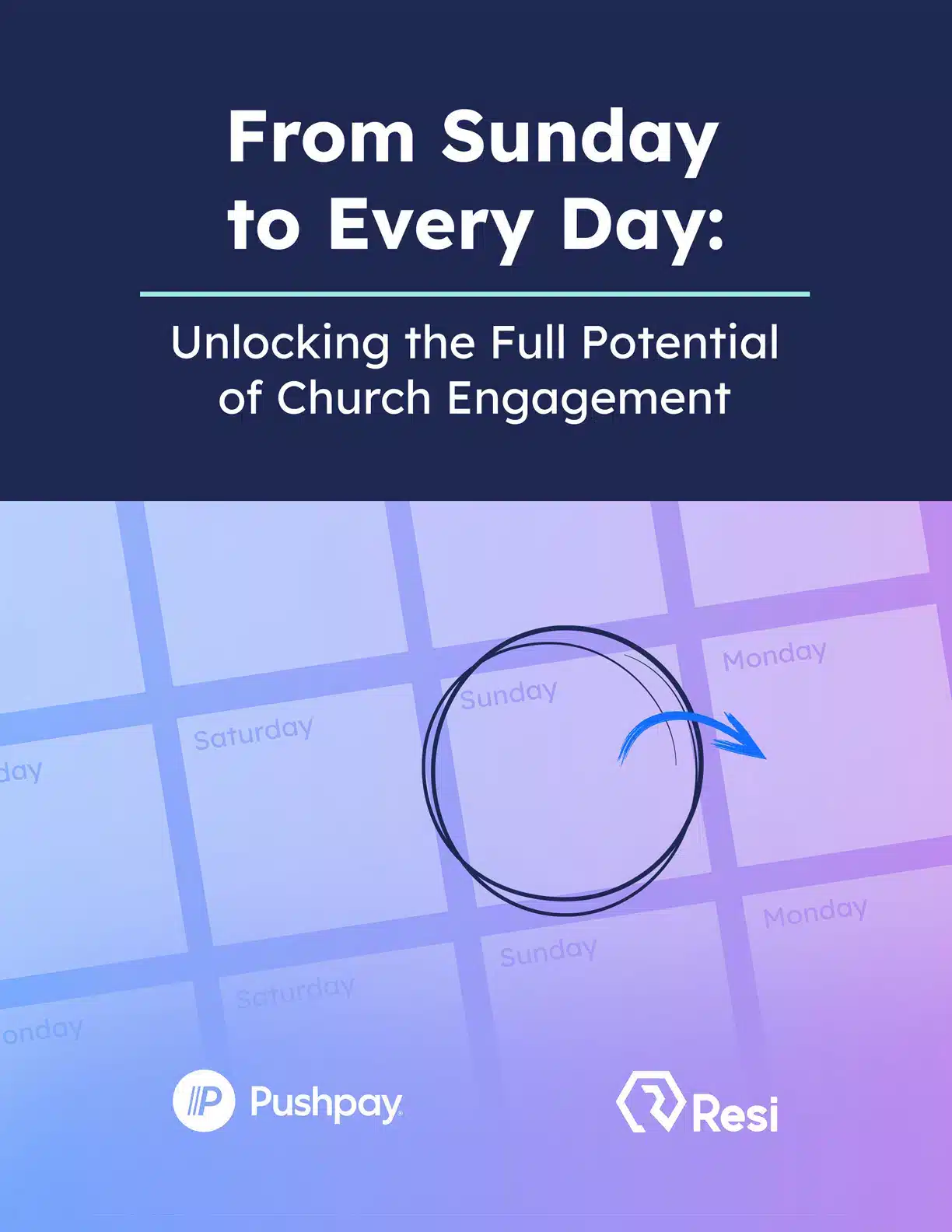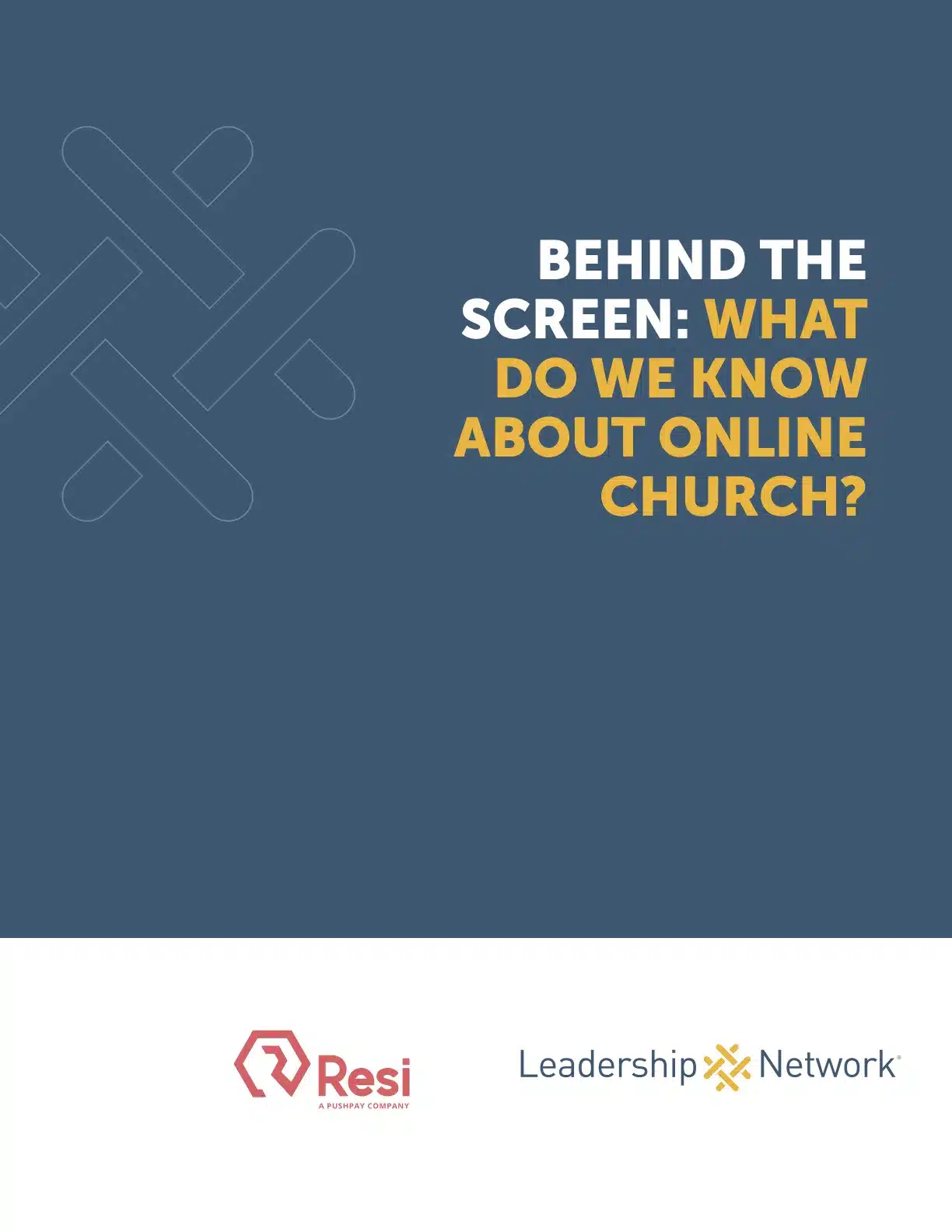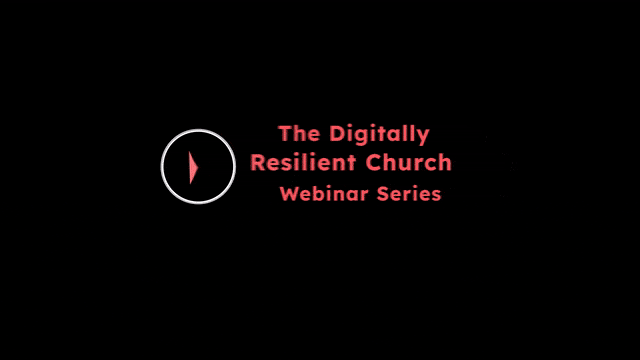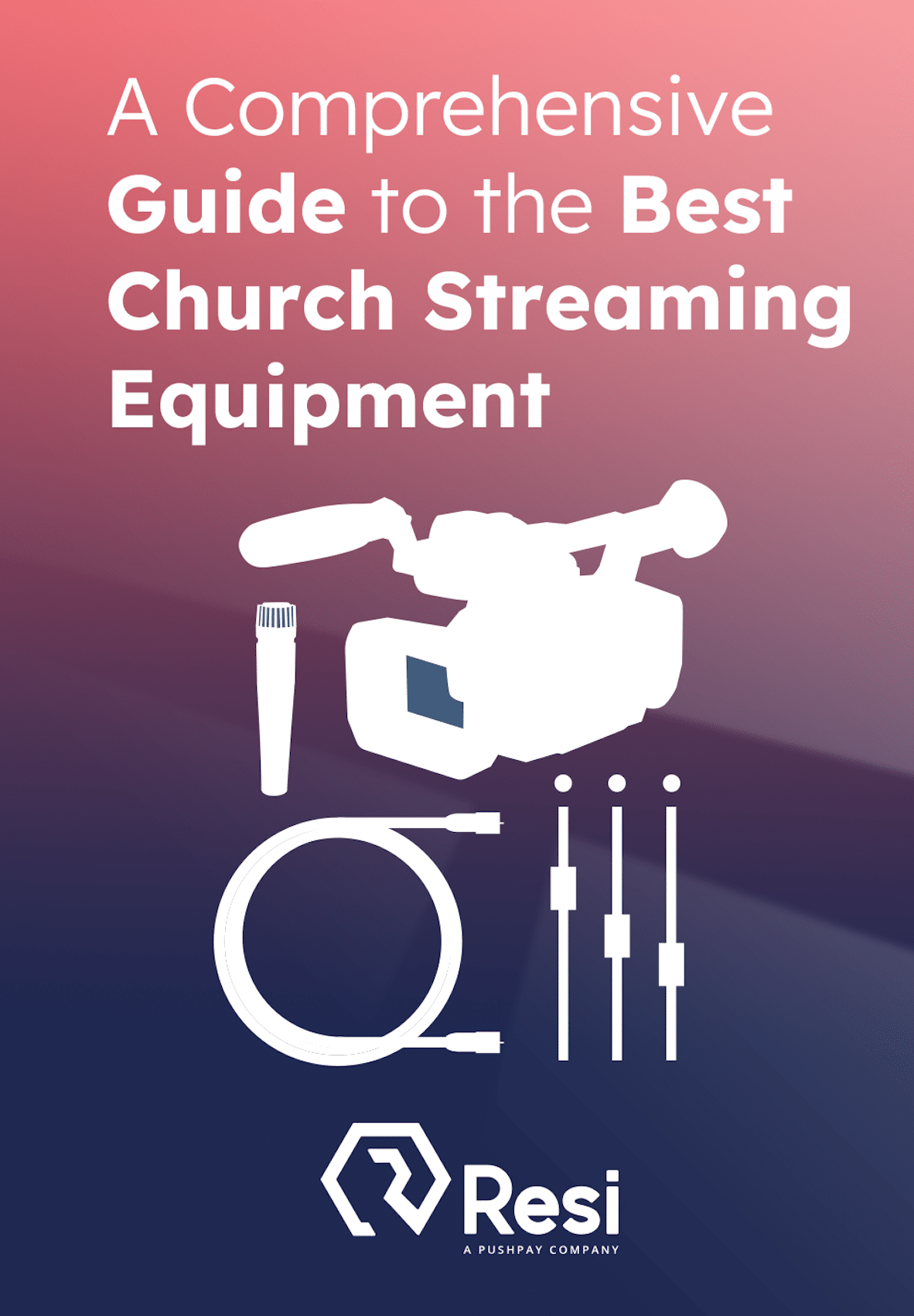
When crafting a digital strategy for churches, it’s vital to move beyond assumptions. Leveraging online tactics to engage with new community members is a viable approach. I often refer to these individuals as “front door” people. By utilizing digital platforms to showcase the church, potential visitors can preview services online before attending in person. If your church is already embracing this, fantastic! Online services serve as a potent local tool.
However, there’s an untapped opportunity – the realm of “digital door” individuals.
3 Ways Churches Treat Digital Door Attendees
In Resi’s recent online event, The Digitally Resilient Church, we asked the church leaders in attendance how many engage with attendees outside the church’s physical reach (implied 30-mile radius from the physical building). These attendees will likely never come to the physical building, but there is still an option to engage and disciple these “digital door” attendees. In an unscientific poll, 95.4% of church leaders surveyed during The Digitally Resilient Church said they had successfully engaged with these “digital door” attendees.
What are we, the church, supposed to do with these “digital door” attendees? Typically, in 2024, we see churches respond in three different ways:
- Churches ignore digital door people – Unfortunately, churches often overlook remote viewers, like attendees from other counties or countries, assuming they won’t ever visit in person. Neglecting these digital guests is a missed opportunity. If these online visitors trust you enough to engage or share their details, they likely want more interaction. This presents a valuable chance to nurture a relationship and potentially guide them towards digital discipleship. This situation mirrors a Biblical lesson where someone in need is ignored by the religious—the story of the Good Samaritan in Luke 10:29-37.
- Churches help digital door people find a local church – Churches that engage in this practice demonstrate a sense of responsibility. They are entrusted by God with digital connections, ensuring a seamless transition to a physical church in the attendee’s vicinity. Leveraging Google for church searches allows for alignment in theology, which proves most practical. However, as the attendee base expands globally, the task becomes challenging. While English is commonly spoken worldwide, Google Translate struggles with theological nuances, hindering the search for similar churches on a global scale.
- Churches disciple digital door people using digital tools and resources – Rather than ignoring the attendee or outsourcing discipleship responsibilities to a local church, some churches are taking advantage of the trust the attendee is showing to the church and utilizing digital tools to disciple people online. Tools like Zoom, Asynchronous Communities like Slack or Discord, and even Text Groups can be used to build disciple-making relationships digitally.
A friend and church staffer, Mike Christian, told Patrick’s Story a while back. I first got an email from Patrick, a native of Kenya, when I was a digital pastor. Thinking it was a scam for some get-rich scheme, I read through the email quickly, waiting to find the amount of money Patrick wanted him to send me before he would send it back to me with 20x interest. Ironically, Patrick never asked for money. Patrick was asking for discipleship. That’s when I introduced Patrick to a former missionary to India, Mike Christian.
Mike discipled Patrick, who would plant multiple churches in Kenya and essentially start a network of churches from different cities, states, and even countries! There are other stories like Patrick’s. Tyler Sansom from First Capital Christian Church discussed this during The Digitally Resilient Church.
Utilizing digital strategies to disciple individuals presents churches like yours with a remarkable opportunity for multiplication. Instead of viewing the online church as a virtual worship space, envision it as a distribution center for disseminating the Gospel and igniting new initiatives. As you engage with individuals through digital platforms, consider their journey post-discipleship. While those nurtured in physical church settings often lead small groups or contribute within the church building, where can online participants contribute? While online small groups and chat hosts are viable options, what other avenues are available for their service and involvement?
From Sunday to Every Day
Download our FREE ebook to find out how your church can measure success in this engagement-centric culture.
Download for free!
During The Digitally Resilient Church session, Tyler and I discussed the idea of a microsite church. A newer strategy being experimented with in recent months is physical churches utilizing digital technology like Resi to stream church services into homes, workplaces, or other locations where volunteers host church services! Think of these like a multi-site location that’s 100% run by volunteers. Tyler’s First Capital Christian Church has about 20 microsites from Indiana to India! Tyler and I shared some insights on the different models of microsites and what it looks like for churches to start them.
3 Best Ways to Use Microsites in Your Church’s Digital Strategy
There are several benefits to utilizing microsites in established church settings:
- You can effectively reach a different type of person. Some people have an inherent distrust of churches or even church buildings. Re-engaging de-churched individuals is more accessible through individuals and homes. Francis Chan said, “Evangelism in the future will happen in our homes and living rooms, not our sanctuaries and cathedrals.” Churches like yours have an opportunity to capitalize on that now.
- Microsites are an incredible training ground. Looking for someone who can shepherd the next multisite location or be the next church planter? First, let’s see how they shepherd 10-20 people in a microsite. This can be a safe space for them to engage.
- Microsites can be a helpful starting point for launching new multi-site campuses or church plants. Some early tests have even seen microsites based on church service broadcasts be used to combine and launch multi-site campuses or new church plants. Looking for where to plant your next location? Check out a heat map of your online viewership and make some educated guesses. Start doing some physical meetups and pop-up churches in that space, and eventually build momentum to get microsites started until you get critical mass to begin meeting together—or, maybe just keep the group meeting at the microsite level.
The ‘Why’ Behind Your Digital Strategy
The biggest challenge to discipling “digital door” attendees, or even starting microsite locations, is the question of “why”? Why is your church doing this?
As church leaders, you know that the mission and vision of the church are crucial to day-to-day operations. If something is misaligned within the church, the item in question can easily be compared to the mission and vision of the church.
Example: As a digital pastor at a church focused on serving its local community, I initiated microsites in cities hours away and established micro church networks in other states. The leadership initially embraced the missional potential of these endeavors. However, when I sought funding for these projects, they hesitated because the vision of the microsites did not align with the church’s primary goal of serving its own city. The success of microsites hinges greatly on leadership support.
When your church embraces digital tools effectively, connecting with online visitors becomes inevitable. Make prudent use of the resources entrusted to your church by God. Invest in nurturing disciple-making relationships, and who knows, it might lead to God starting something new with your help.
Behind the Screen: What Do We Know About Online Church?
See our findings about online church and gain important insight into your online audience.
Download for free!








